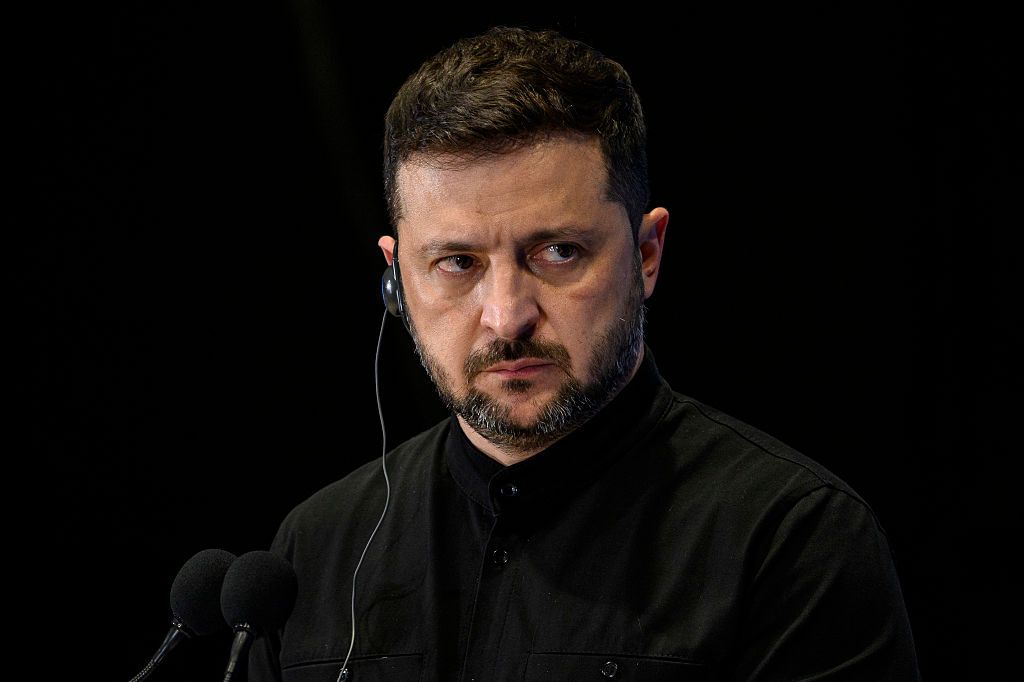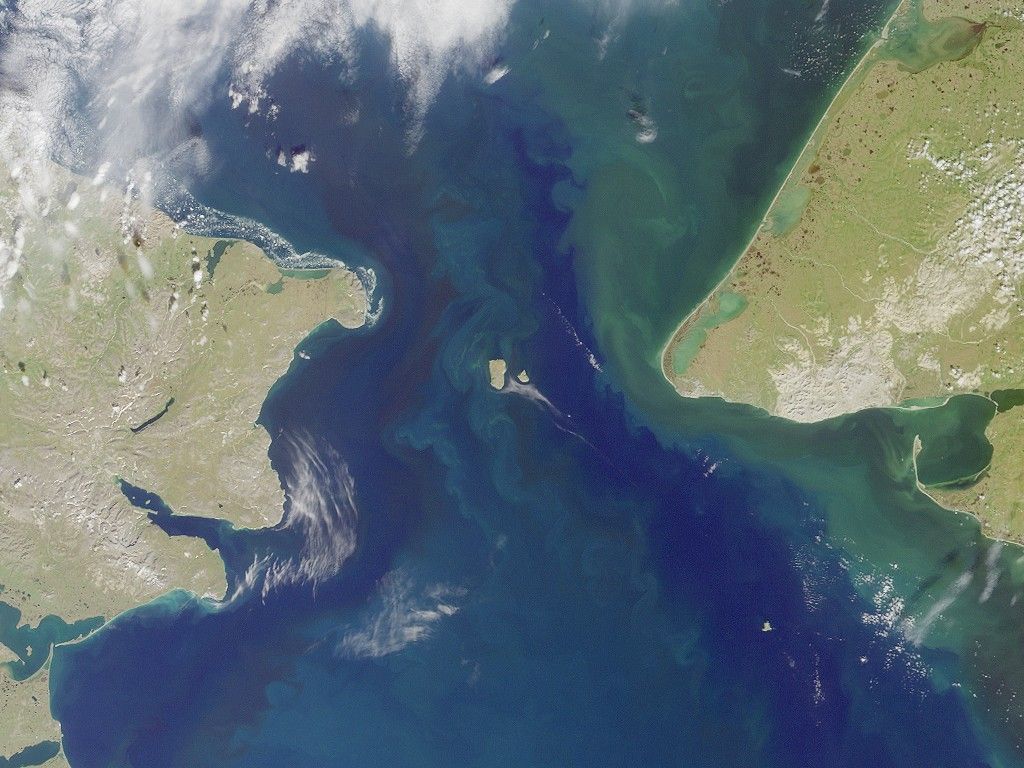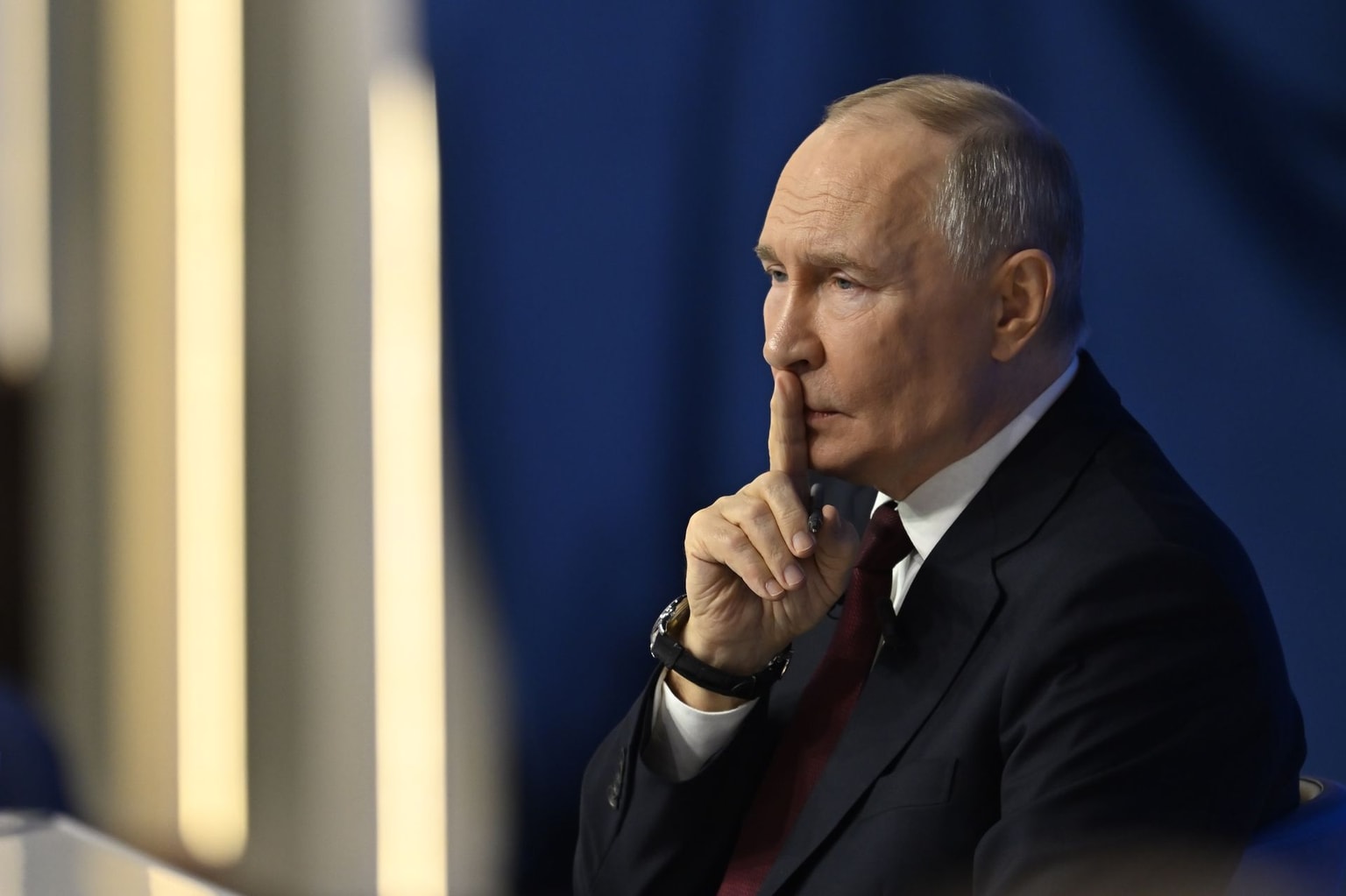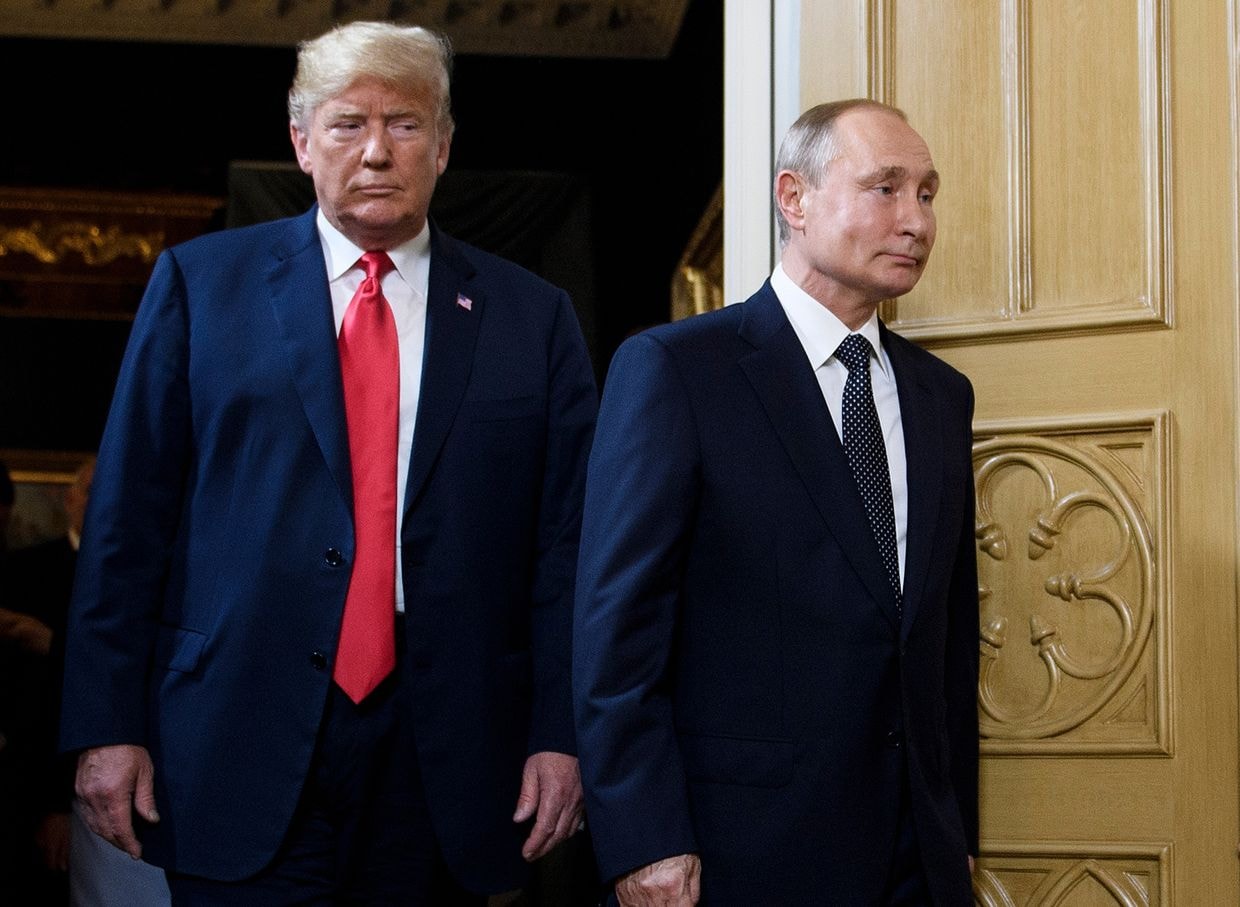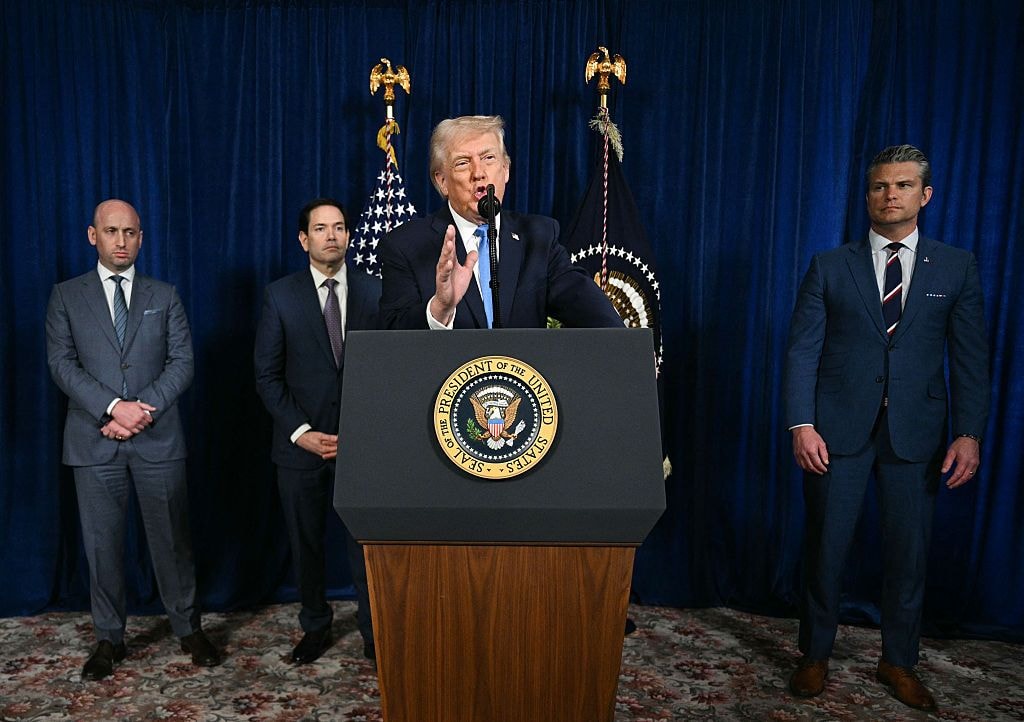
Everything we know about Russia’s rapid advance in Donetsk Oblast ahead of key talks with Trump
A Ukrainian soldier walks through the destruction after a large-scale Russian attack on a residential complex in Dobropillia, Donetsk Oblast, Ukraine, on March 10, 2025. (Paula Bronstein/Getty Images)
As Russia prepares for a diplomatic push to pressure Kyiv into withdrawing from the Ukrainian-controlled parts of Donetsk Oblast during negotiations with the U.S. this week, its forces have pierced through Ukrainian lines in a dramatic advance that could compromise the defense of the region.
Over the past few days, Moscow’s forces advanced 10 kilometers toward the Dobropillia-Kramatorsk highway by leveraging its numerical superiority, the Ukrainian monitoring group DeepState reported on Aug. 11.
The push is part of a larger Russian offensive between the two major embattled cities, Pokrovsk and Kostiantynivka, and could allow Moscow to cut remaining supply routes, further increasing pressure on the Ukrainian troops in the sector.
Analysts see the new push primarily as an attempt to strengthen Russia’s position ahead of the Alaska meeting between the U.S. President Donald Trump and his Russian counterpart Vladimir Putin, scheduled for Aug. 15.
“As the political situation is tense, even tactical breaches may have a strategic edge if alarmist narratives start spreading widely in the information space just before important negotiations,” military analyst Emil Kastehelmi told the Kyiv Independent.
But if the Russian assault groups can consolidate their positions and exploit the existing breach, the advance could also help Russia quickly accelerate its goal to take Donetsk Oblast — which it invaded in 2014 and has sought to fully occupy ever since — by force.
President Volodymyr Zelensky confirmed Russia’s advance to journalists on Aug. 12 but downplayed it as involving only “groups of Russians,” without armored vehicles.

However, Ukrainian military experts and soldiers argued that the recent gains — following a number of gradual setbacks in the region over the past year – point to broader systemic issues within the Ukrainian military, such as the severe shortage of manpower and poor strategic vision among the top command.
According to the Institute for the Study of War (ISW), the next few days could prove decisive in determining whether Russia can turn its tactical gains near Dobropillia into strategic ones.
“The next several days in the Pokrovsk area of operations will likely be critical for Ukraine’s ability to prevent accelerated Russian gains north and northwest of Pokrovsk,” the ISW wrote.
What’s happening on the ground?
Russia’s recent push in Donetsk Oblast has been underway since spring but intensified dramatically in several sectors in August.
Russian forces have stepped up pressure on the Dobropillia sector, gradually advancing into front-line villages and probing for weak points in Ukraine’s defenses over the past days.
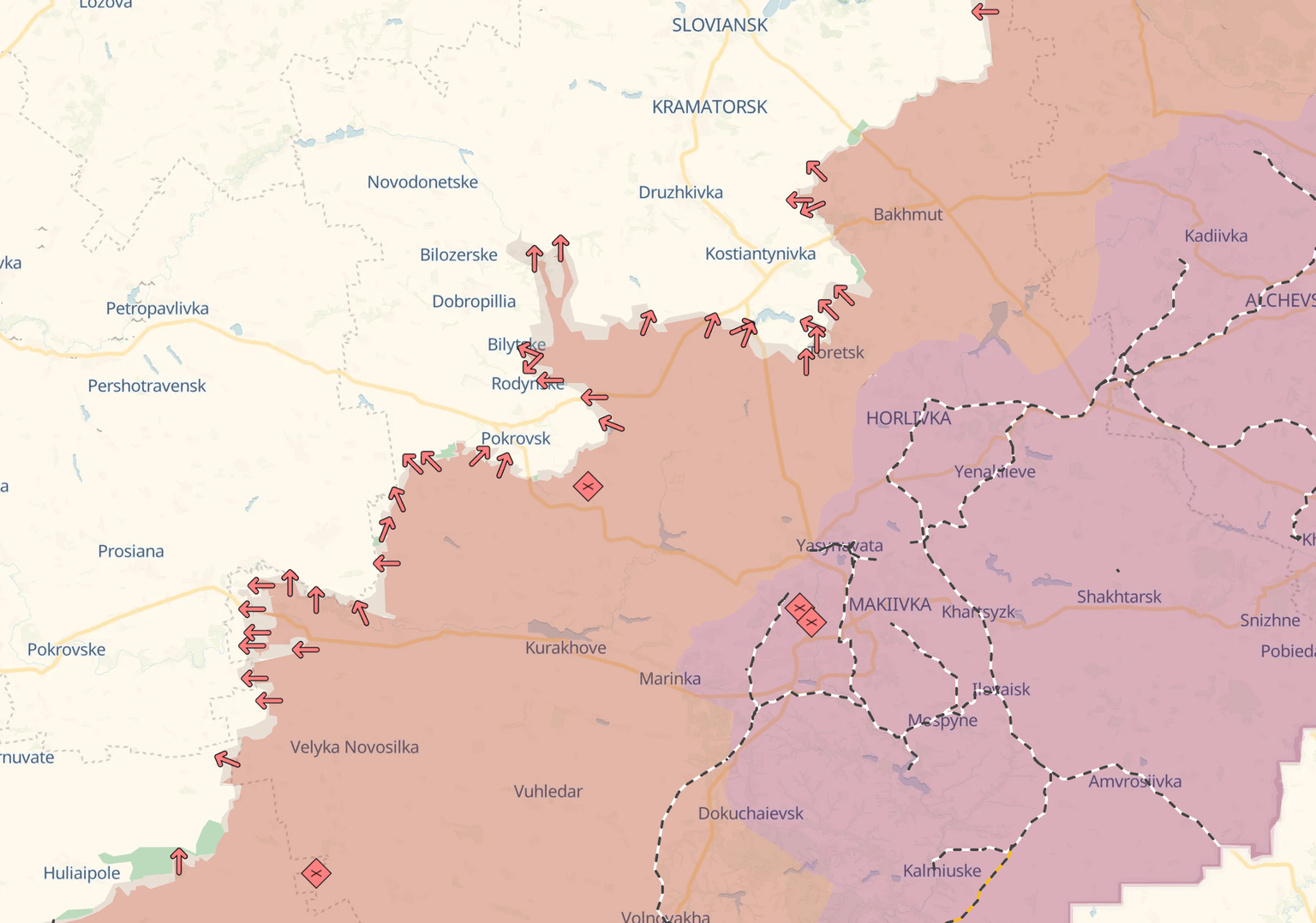
According to DeepState, Russian assault groups have entered the villages of Kucheriv Yar, Zolotyi Kolodiaz, and Vesele, while also building up forces in the area.
The Institute for the Study of War said that Russian troops have likely taken several other settlements southeast and east of Dobropillia and partially cut the T-0515 Pokrovsk-Dobropillia highway, a key supply route for the Ukrainian troops.
According to Zelensky, groups of Russian soldiers are carrying out the advance in the area mostly on foot and with light vehicles, with no support from heavier armored vehicles.
“Some have already been located — some killed, some taken prisoner,” he said on Aug. 12, pledging that the rest will also be found and destroyed in the near future.
According to DeepState, Moscow is indeed relying on small infantry units to infiltrate the Dobropillia sector, bypassing a porous first line of defense and establishing footholds for further attacks.
Ukrainian brigades, even the military’s top units, are severely understrength in infantry thanks both to failures to fix mobilization processes country-wide, and the increasingly deadly nature of holding front-line infantry positions under a sky saturated with Russian drones.
As a result, over 2025, larger holes have opened up in Ukrainian lines, which Russian forces have sought to exploit with waves of small, stealthy infantry assaults.
“The situation is chaotic,” DeepState wrote in its Aug. 11 update. “The enemy, having found gaps in our defense, is seeping deeper, trying to quickly entrench and amass forces for further advances… If they occupy our fortifications, it will be extremely difficult to dislodge them.”
Is this a breakthrough?
While the Russian advance near Dobropillia is dramatic in terms of distance covered, experts say it should not yet be classified as a breakthrough.
“Russian infantry has managed to breach thinly manned Ukrainian defenses,” Kastehelmi said, ”however, this development had already been underway in recent weeks, so it’s not purely a rapid breakthrough — by definition, I wouldn’t even call it a breakthrough or a collapse yet, as currently it’s only infantry exploiting a weak spot without an armored component committed to the breach.”
At the same time, prominent Ukrainian officers and military experts have raised alarm about the new gains, saying that they point to the wider systemic problems in the Ukrainian military, which have been evident for a while but remained ignored by the top command.
Former Azov officer Bohdan Krotevych, a vocal critic of the Ukrainian command’s outdated practices and poor strategic planning that often lead to territorial losses and unnecessary casualties, said that in the Pokrovsk-Kostiantynivka sector, “the front line as a stable line no longer exists.”
“Pokrovsk and Myrnohrad are almost encircled. Kostiantynivka is in a partial encirclement. The enemy is advancing toward Kramatorsk and Druzhkivka,” he wrote on X.


“The systemic problem began with the depletion of reserves, the mass fragmentation of units along the entire front line, and reports of a ‘captured village’ being presented as a victory against the backdrop of failures across entire sectors,” Krotevych said, adding that there is “a complete absence of strategic — and even operational — vision of the theater of war among part of the military leadership.
Military analyst and head of Ukraine’s largest fund that supplies the military, Taras Chmut, echoed Krotevych’s concerns, saying that Ukraine’s setbacks in Donetsk Oblast are the result of long-standing problems.
He warned that Ukraine has been losing ground incrementally — from platoon positions to companies and now battalions — and that without decisive action, Russia could commit its armored reserves and capture large swaths of land, tens and hundreds of square kilometers, as was the case in 2022.
“Ignoring problems does not lead to their solution. But the worst thing is to ignore the real state of affairs. Support the Defense Forces. Wherever and in any way you can,” Chmut wrote on X.
What’s next?
If Russian forces can complete their buildup and fortify newly-captured positions near Dobropillia, they can be expected to push deeper into Ukrainian-held territory, according to analysts at DeepState. Additional drone crews could be deployed to disrupt Ukraine’s logistics and complicate the defense of surrounding positions.
“With this pace of events, if nothing changes, we may face a situation where Dobropillia falls before Pokrovsk,” DeepState warned.
Kastehelmi, however, says that even if Russia consolidates its positions in the area and creates a salient, this would not automatically lead to larger operational success.
“True strategic shifts require larger and more decisive changes on the battlefield,” he said.
“A lot depends on how Ukrainian reserves are able to stabilize the situation.”
Kastehelmi expects Ukrainian units from other sectors and reserves to be redeployed to reinforce the Dobropillia area. However, he says that the limited reserve base could allow Russia to exploit the pressure by launching new attacks elsewhere. Ukraine, he adds, risks drifting into a reactive posture if it is forced to respond to multiple emerging crises at the same time.
“If the Russians want to put maximum stress on the Ukrainians while also trying to improve their diplomatic position, now would be a potential time for that,” Kastehelmi said.


